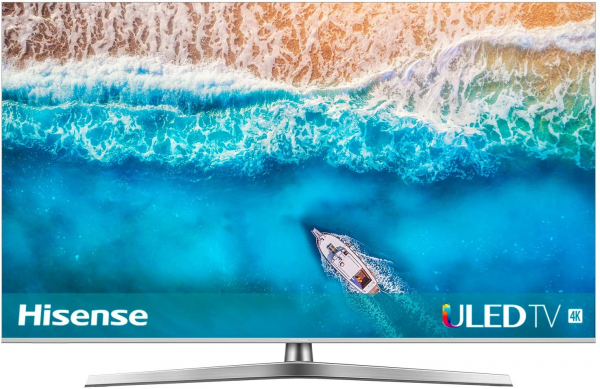Hisense
Hisense H65U7B: a 65 inch Ultra HD TV for less than 900 €
Aprox. 697€
See specificationsThe Hisense H65U7B television succeeds the Hisense H65U7A of 2018 and brings some interesting new features, including HDR10 + and Dolby Vision compatibility which makes perfect sense on an LCD TV in this range.
Positive points
Image quality in SDR.
Good HDR calibration.
Finish.
Alexa built into the TV.
Microphone on the remote control.
Bad points
Brightness peak which limits the interest of HDR.
Reduced viewing angles.
Our review
Presentation
The Hisense H65U7B television has a 10-inch VA panel (8-bit + FRC) of 65 inches (≈165 cm) displaying an Ultra HD definition of 3 840 x 2 160 px. Despite its price of € 899, this television is still considered an entry-level model with its refresh rate limited to 50 Hz. There is a simple DVB-T2 / C / S2 tuner (TNT, cable and satellite), a 2 x 15 W audio system, a MStar MSD6886 quad-core processor and the VIDAA U2.5 home operating system with some popular applications like YouTube or Netflix. It stands out above all from the competition and its predecessor (the Hisense H55U7A) by the support of HDR10 + and Dolby Vision. HDR formats using dynamic metadata are much more effective on entry-level LCD TVs with limited peak brightness.
The Hisense H65U7B television is sold for around € 900. It is also available in 50 inch (≈127 cm / H50U7B) and 55 inch (≈165 cm / H55U7B) versions at the respective prices of € 599 and € 899. There is no mistake, the 55 inch model is sold well at the same price as the 65 inch version.
All the brightness and colorimetric measurements mentioned in this article were carried out with a SpectraCal C6-HDR probe and the CalMAN Ultimate software.
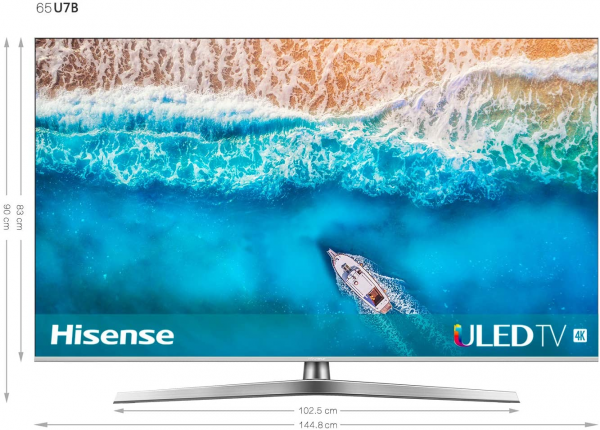
Image quality
The Hisense H565U7B has a VA panel. This LCD display technology allows you to display deep blacks and therefore obtain good native contrast, at the expense of narrower viewing angles than those of IPS or Oled panels. On this television, we measured a loss of brightness of 55% at 45 ° on the sides, a fairly good value for a VA model.
In "Night Cinema" mode, the H65U7B television displays a very well calibrated image. The average Delta E measured at 2 is simply excellent and only two shades exceed the value of 3 - threshold beyond which the human eye can perceive the drift of a color. The colors reproduced by this television can therefore be considered as faithful to those sent by the source.
The default BT.1884 gamma is not as good as the color rendering. We measured the average gamma at 2.32, but the dark grays are a little underexposed, like some very light grays. The overall result remains above the average.
The color temperature is stable across the spectrum and the rendering is excellent. We measured the average at 6,280 K, a value very close to the 6,500 K reference.
The Hisense U7B displays a very good contrast ratio. Measured at 3,660: 1, it provides deep blacks (0.04 cd / m²), even in the dark. It does not reach the contrast ratio measured on the best VA panels which can exceed 5,000: 1 (Samsung QE65Q9FN, Hisense H55U7A or Sony 65XF9005) and, obviously, it cannot compete with Oled TVs, but it does comes out of it honorably. Please note, this contrast is only valid from the front. As soon as one shifts from the center, one observes leaks and a blatant drop in contrast.
The scaling engine implemented by Hisense smooths the original source, which results in a slight loss of sharpness of the image. On this point, the Chinese manufacturer is lagging behind the best players in the market, including Sony, Philips and Panasonic. The TV does have a motion compensation engine, but it has no impact on the image. The moving image suffers from a fairly present blur, whatever the mode chosen, this is partly due to the very high persistence time of the pixels.
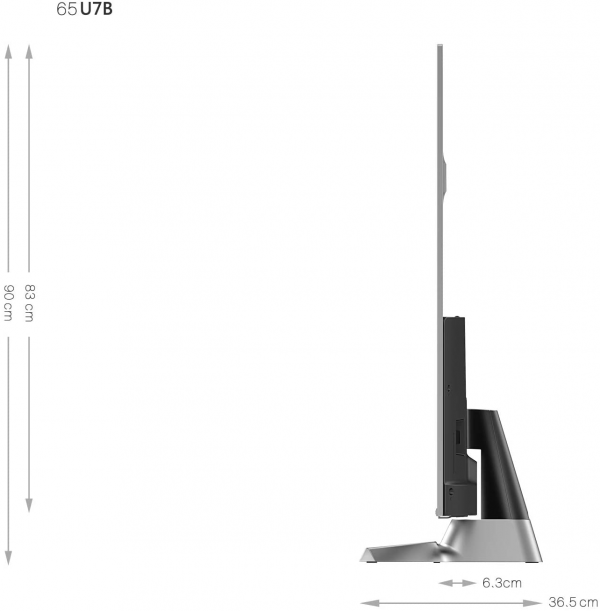
HDR
With a maximum HDR signal of 10,000 cd / m², the Display Tone Mapping used by Hisense behaves quite well. It is a little too enthusiastic between 40 and 50% of luminance, but then smooths the signal correctly to avoid clipping up to 80%. This television especially suffers from a very limited peak in brightness. We have not exceeded 272 cd / m², which limits all the interest of HDR. Fortunately, HDR10 + and Dolby Vision compatibility, two formats of dynamic metadata, allow the dynamics of the image to be reproduced more faithfully on a television set with limited technical capabilities.
HDR Day mode provides the best color rendering. We measured the average delta E at 4.4. The colors cannot therefore be considered as perfect, but they are in the good average, especially for HDR.
The Hisense H65U7B has 65% coverage of the Rec.2020 color space. It does almost as well as the Oled TVs that climb to 70% coverage of Rec.2020, but it's still a notch below the Samsung 65Q9FN (74%). In any case, we are still far from 100%. The current cinema is content for the moment with the DCI-P3 color space and the Hisense television covers 88% of this space. Again, it's pretty close to 90-95% of P3 displayed by Oled TVs and the best LCD TVs. So it does very well for an LCD TV in this range.
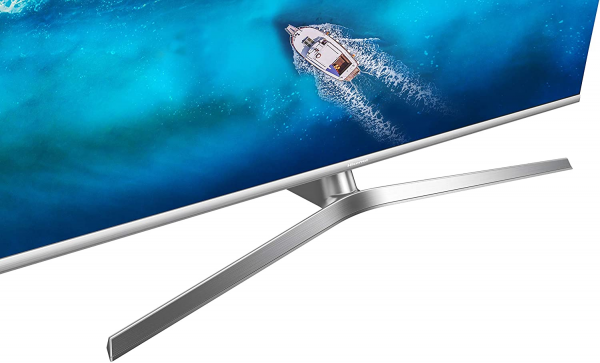
Video games
This television is not really a good playmate. The very long afterglow results in the image by a very annoying ghosting effect (streaks behind moving objects) visible in almost all games. The delay in the display measured at 54 ms (more than 3 images compared to the source) does not help anything and brings a certain heaviness in the commands. In comparison, Samsung reaches 15 ms on its 65Q9FN and on the last 65Q85R, the 2018 Oleds like the Panasonic 55FZ800 or the LG 55C8 are 21 ms behind, and the latest LG OLED 65C9 even drops to 13 ms.
Color fidelity in Game mode is important, because the atmosphere created by the creators of the game must be respected by the television, just like that of a film. On this point, Hisense had the good idea to let the user activate the Game mode on any image preset. It is therefore possible to reduce the input lag while retaining the color fidelity of the "Night Cinema" mode. There is still a slight variation since we measured the Delta E at 2.6, against 2 for the classic Cinema Night mode. This remains an excellent value and the colors can be considered as faithful.
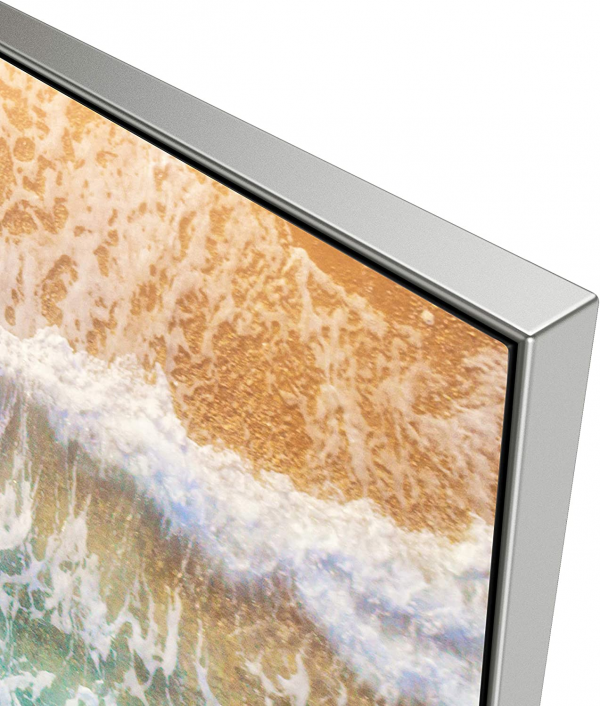
Clouding
The Hisense H65U7B uses an Edge Led backlight system consisting of a single bar located at the base of the slab. The diffuser filter of Edge Led models is quite sensitive to shocks and a problem during transport can result in clouding (grayish spots on a gray background). If we did not find a clouding problem on the model we tested, we noted a significant decrease in brightness in the corners.
We have measured the average difference in white homogeneity over the entire slab at 11%; good value for a 65 inch TV. Remember that below 20%, the eye does not perceive the difference in uniformity.
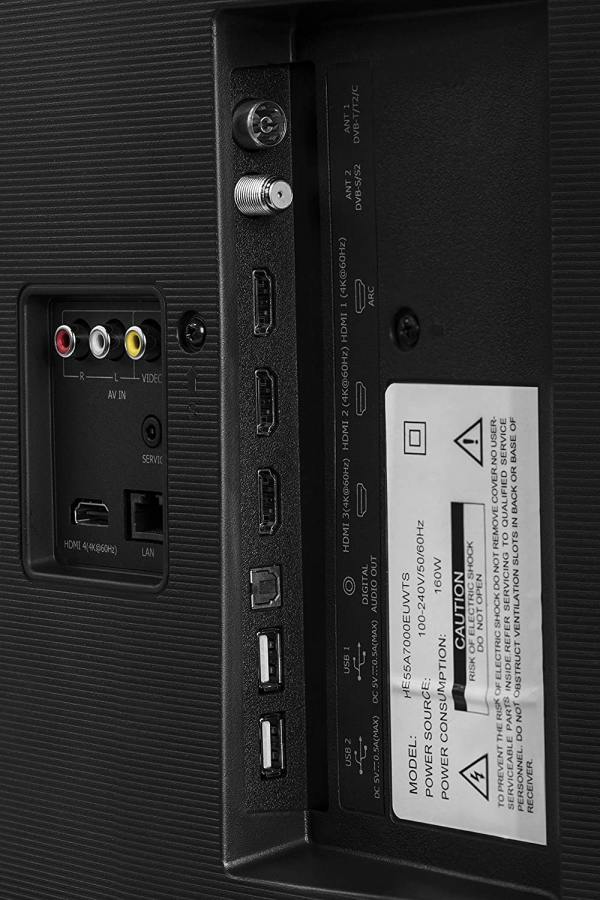
Ergonomics
The Hisense H65U7B has a fairly classic design. It takes again the foot in Y popularized by the Korean mark Samsung. The base of the slab also in imitation aluminum provides a small premium side. The finishes are good for a TV in this price range.
The screen edges are not particularly thin, but this is acceptable for a 65-inch TV. We did not note any assembly defect.
If the anti-glare filter of this TV cannot compete with that of the best on the market - like those of the high-end Oled or Qled models -, it is still a little better than the average. It filters reflections close to the center at 20 ° and 60 ° fairly well, but much less those at 85 °.
Without its feet, the Hisense H65U7B is content with a depth of 6.3 cm at the base and a little less than 2 cm at the top. The size on the TV cabinet is linked to that of the foot which is unfortunately not very discreet on this model. With a depth of 36.4 cm, this TV is just right on our benchmark TV stand which measures 160 x 40 cm. Suffice to say that it is impossible to install a soundbar in this configuration.
The back of the TV is very simple. We find the power connector on the left, the connector on the right and the VESA 400 x 200 mm mounting holes in the center. The base serves as a cable management system and allows a maximum of two or three cables to pass through it.
Grouped at the back of the TV, the connection consists of four HDMI 2.0 inputs, two USB ports, an Ethernet port, a composite input, an optical digital audio output, a TNT / cable antenna socket and a satellite antenna socket. The TV also has 802.11 a / b / g / n / ac Wi-Fi and Bluetooth for the connection of a headset or a wireless speaker.
The Hisense TV works with the Vidaa U2.5 home operating system which displays a fairly classic, clear and rather fluid interface. It offers the basic functionality of a connected TV, including popular applications like NetFlix, YouTube, DailyMotion, Rakuten TV as well as a media player that supports a large number of file types and containers (H.264, Xvid, AVI, MWV, MKV , etc.). Hisense remains a notch behind Android TV, Tizen and WebOS which now offer a more convincing experience, especially in terms of the number of applications and voice search. New this year is the integration of Amazon's Alexa voice assistant, which can be used via the remote control that incorporates a microphone.
The remote control is classic, but effective. Light, it fits well in the hand and the rubber keys fall naturally under the thumb. The click after each press is audible. The remote control gives access to all the settings and even offers multimedia keys. Dedicated keys also allow direct access to Netflix, YouTube and the media player. As we said above, the novelty is the presence of a microphone which allows voice searches, essential to fully exploit the capabilities of a connected TV.
The first start-up of the television takes about 15 seconds, a time that is about average. The extinction is instantaneous while the recovery is done in less than 5 seconds; a great time, especially since the TV consumes less than one watt in standby.
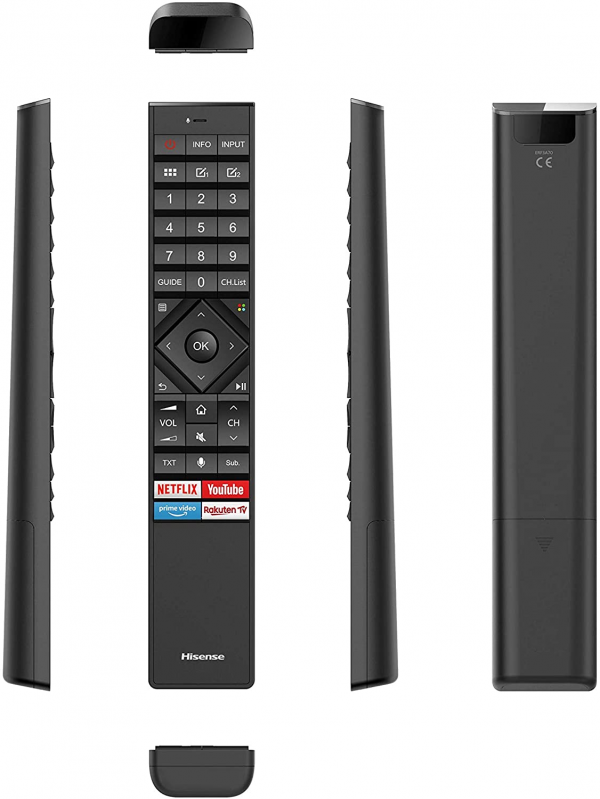
Audio
Dolby Atmos certified, the audio part of this television is not really transcendent. The audio system is content to reproduce voices fairly well around 1000 Hz and offers a good reproduction of low-mids from 80 Hz, but it lacks precision in the treble. It's enough to watch TV, but movie buffs will turn to a sound bar, home theater kit, or even a PC speaker kit.
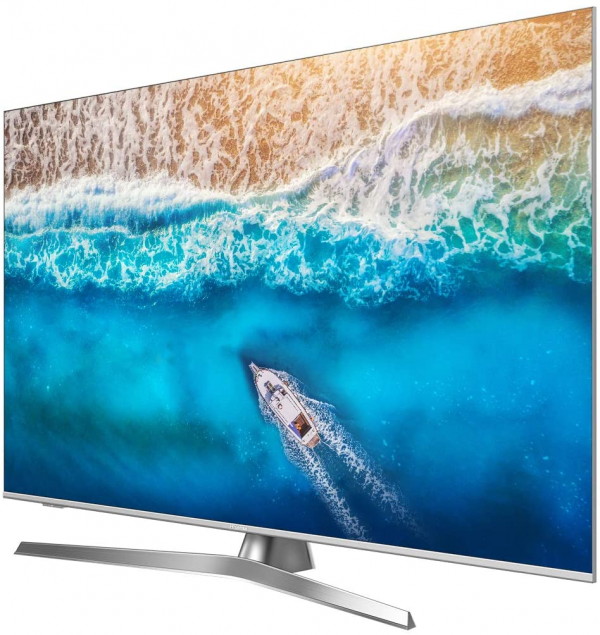
Consumption
We measured consumption at 99 W on our target with a white set around 150 cd / m². Relative consumption thus reaches 85 W / m², a value lower than the average of the televisions tested (around 100 W / m²). In comparison, the Sharp LC-60UI7652E television reaches 99 W / m² while the most economical of televisions, the Samsung 55Q6F is content with 61 W / m². The consumption of Oled TVs like the LG 55C8 (108 W / m²) or the Panasonic 55FZ800 (97 W / m²) is higher. Standby consumption is always less than 1 W.
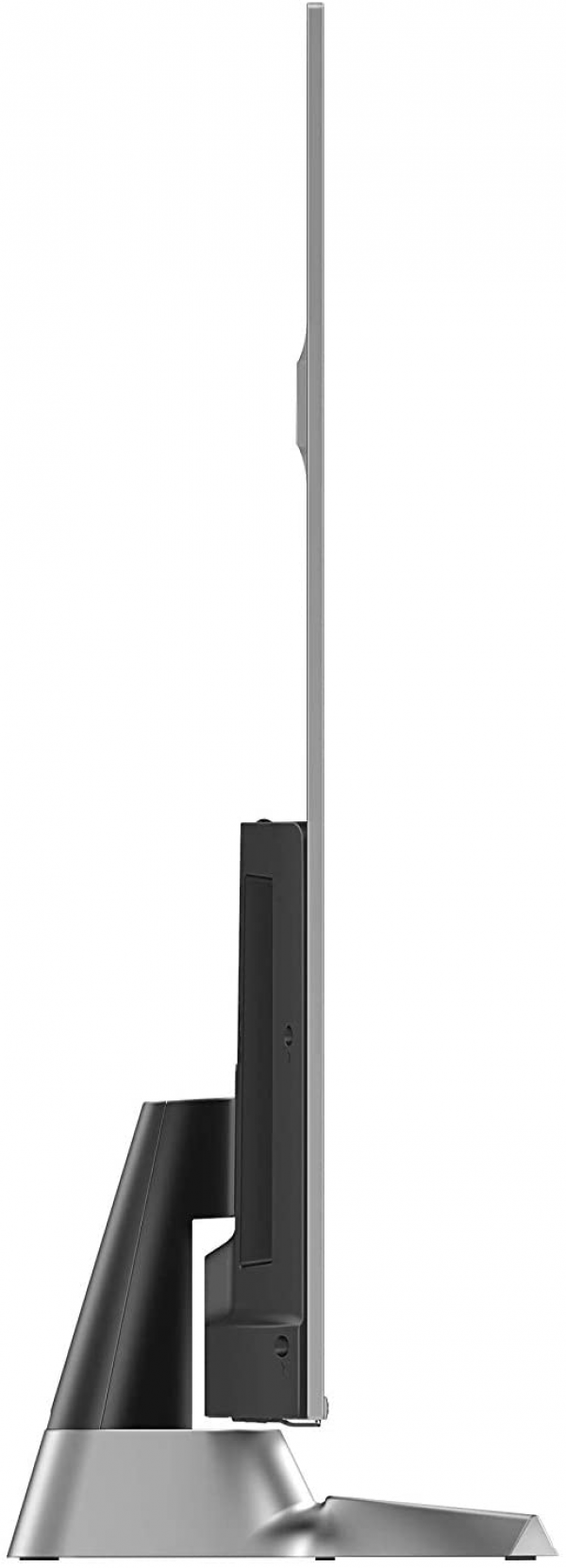
Conclusion
The Hisense H65U7B is a good television which delivers an image very well calibrated in SDR and fairly good in HDR. It simply lacks a higher brightness peak and a more responsive panel to compete with higher end televisions like the Samsung Qled QE65Q85R.
Specifications

